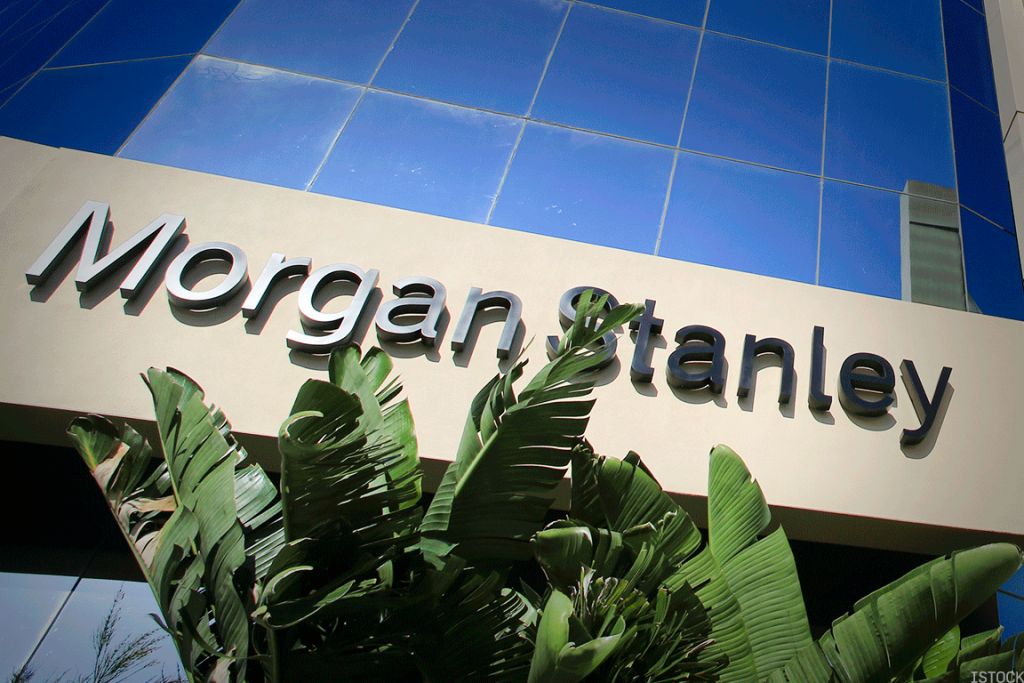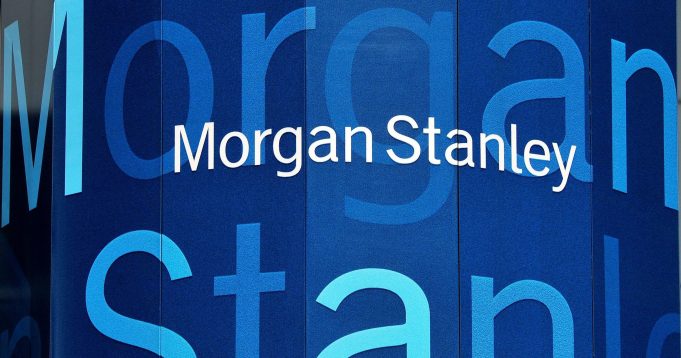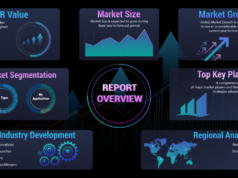This report provides the last five years revenues and revenue growth of Morgan Stanley (MS) from 2012 to 2016. Morgan Stanley generated a total of $34.6 billion revenues during 2016. Morgan Stanley reported a revenue growth of -1.5% year-over-year during 2016. The revenues and the revenue growth correspond to the fiscal year ending in December.
MORGAN STANLEY REVENUES FROM 2012 TO 2016
Here are the revenues and the revenue growth details of Morgan Stanley during the last five years:
- Morgan Stanley generated a total of $26.2 billion revenues during 2012. Morgan Stanley reported a revenue growth of -18.8% year-over-year during 2012.
- Morgan Stanley generated a total of $32.5 billion revenues during 2013. Morgan Stanley reported a revenue growth of 24.1% year-over-year during 2013.
- Morgan Stanley generated a total of $34.3 billion revenues during 2014. Morgan Stanley reported a revenue growth of 5.5% year-over-year during 2014.
- Morgan Stanley generated a total of $35.2 billion revenues during 2015. Morgan Stanley reported a revenue growth of 2.6% year-over-year during 2015.
- Morgan Stanley generated a total of $34.6 billion revenues during 2016. Morgan Stanley reported a revenue growth of -1.5% year-over-year during 2016.

WHY ANALYZE REVENUE GROWTH?
Revenue growth is the most commonly analyzed financial metric. Revenue Growth is the percent increase (or decrease) of a company’s revenue between two time periods. It is computed by using the following formula: ((revenues during the time period two – revenues during the time period one) / revenues during the time period one)*100. If the time periods are two consecutive years, then the revenue growth is referred to as the annual revenue growth year-over-year. If the time periods are two consecutive quarters, then the revenue growth is referred to as the quarterly revenue growth quarter-over-quarter. If the time periods refer to the same quarter in the two consecutive years, then the revenue growth is referred to as quarterly revenue growth year-over-year. In case the time periods are two non-consecutive years, then the revenue CAGR (Commutative Annual Growth Rate) is computed.
Revenue growth analysis is important for a number of reasons. First, it helps in understanding how a business is performing. If the revenue growth rates are positive, it means the business is performing well and the revenues are increasing. If the revenue growth rates are negative, it means the revenues are declining and the company needs to take measures to increase them. If they don’t, the company will continue to shrink. Second, a company’s historical revenue growth analysis along with the market size and market share analysis helps in forecasting the future revenues of a company. Third, a comparison of a company’s growth rates with its competitors helps in determining who is winning more business. A revenue growth higher than the industry average translates into increasing market share. Companies with very high revenue growth rates have the potential to be the industry disrupters.

MORGAN STANLEY RANKING
With $34.6 billion revenues, Morgan Stanley ranked number 77 in the R&P; Research list of top-3000 public companies in the US by revenues during 2016. Each one of the top-3000 companies generated more than $50 million of annual revenues during 2016.
The top-20 companies in the US by revenues during 2016 were:
- Walmart ($482.1 billion)
- ExxonMobil ($226.1 billion)
- Berkshire Hathaway ($223.6 billion)
- Apple ($215.6 billion)
- McKesson ($190.9 billion)
- UnitedHealth Group ($184.8 billion)
- CVS Health ($177.5 billion)
- General Motors ($166.4 billion)
- AT&T; ($163.8 billion)
- Ford Motor ($151.8 billion)
- AmerisourceBergen ($146.8 billion)
- Amazon ($136 billion)
- Verizon ($126 billion)
- General Electric ($123.7 billion)
- Cardinal Health ($121.5 billion)
- Costco ($118.7 billion)
- Walgreens Boots Alliance ($117.4 billion)
- Chevron ($114.5 billion)
- Kroger ($109.8 billion)
- Express Scripts Holding ($100.3 billion)
For the purpose of performance benchmarking of a company with a sector or industry average, R&P; Research associates every company with one sector and one industry. An industry consists of companies with related/similar business models. A sector comprises of a group of related/similar industries. For high-level analysis purposes, related/similar sectors are grouped into sector groups.
For example, Healthcare sector group is comprised of Life Sciences sector and Healthcare Services sector. Life Sciences sector is comprised of following industries: Pharmaceuticals; Medical Devices; Biotechnology; Diagnostics & Scientific Instruments. Healthcare Services sector is comprised of following industries: Medication Stores, PBM and Distributors; Healthcare Payers; Healthcare Providers; Medical Software; Healthcare Research Services.

Morgan Stanley is associated with Financials Sector Group, Financial Services Sector and Investment Services Industry.
With $34.6 billion revenues, Morgan Stanley ranked number 10 of all the companies in the US Financials sector group. There were a total of 705 public companies in the US Financials sector group that had revenues greater than $50 million during 2016.
The top-10 companies in the US Financials sector group by revenues during 2016 were:
- Berkshire Hathaway ($223.6 billion)
- JPMorgan Chase ($95.7 billion)
- Wells Fargo ($84.5 billion)
- Bank of America ($83.7 billion)
- Citigroup ($69.9 billion)
- MetLife ($63.5 billion)
- Prudential Financial ($58.8 billion)
- AIG ($52.4 billion)
- Allstate ($36.5 billion)
- Morgan Stanley ($34.6 billion)
Financials sector group is comprised of the following sectors: Banking; Insurance; Financial Services; Real Estate & REITs.
With $34.6 billion revenues, Morgan Stanley ranked number 1 of all the companies in the US Financial Services sector. There were a total of 210 public companies in the US Financial Services sector that had revenues greater than $50 million during 2016.

The top-10 companies in the US Financial Services sector by revenues during 2016 were:
- Morgan Stanley ($34.6 billion)
- Goldman Sachs ($30.6 billion)
- American Express ($30.1 billion)
- Capital One Financial ($19 billion)
- Bank Of New York Mellon ($15.2 billion)
- Visa ($15.1 billion)
- INTL FCStone ($14.8 billion)
- Ameriprise Financial ($11.7 billion)
- First Data ($11.6 billion)
- BlackRock ($11.2 billion)
Financial Services sector is comprised of the following industries: Investment Services; Consumer Finance; Payment and Transaction Processing Services; Financial News, Research and Data. The definitions for each of the industries is as follows:
- Investment Services industry includes investment banking companies, asset management companies, securities brokers and dealers, online brokers, and security/commodity exchanges.
- Consumer Finance industry includes companies providing credit services and mortgage finance services.
- Payment and Transaction Processing Services industry includes companies providing financial news, research, and data services.
- Financial News, Research and Data industry includes companies providing payments and transaction processing services.
With $34.6 billion revenues, Morgan Stanley ranked number 1 of all the companies in the US Investment Services industry. There were a total of 143 public companies in the US Investment Services industry that had revenues greater than $50 million during 2016.

The top-10 companies in the US Investment Services industry by revenues during 2016 were:
- Morgan Stanley ($34.6 billion)
- Goldman Sachs ($30.6 billion)
- Bank Of New York Mellon ($15.2 billion)
- INTL FCStone ($14.8 billion)
- Ameriprise Financial ($11.7 billion)
- BlackRock ($11.2 billion)
- State Street ($10.2 billion)
- Charles Schwab ($7.5 billion)
- Franklin Templeton Investments ($6.6 billion)
- Intercontinental Exchange ($6 billion)
COMPANIES SEGMENTATION
To identify and analyze high/low growth or most/least profitable similar-size companies in different sectors or industries, R&P; research classifies all companies into different segments based upon their revenues, revenue growth, and net profit margins.
Based upon their annual revenues, the companies are classified into one of the following four segments:
- Mega companies, having revenues greater than $50 billion.
- Very Large companies, having revenues between $10 billion and $50 billion.
- Large companies, having revenues between $1 billion and $10 billion.
- Mid-size companies, having revenues between $50 million and $1 billion.
With $34.6 billion revenues, Morgan Stanley was in the Very Large companies revenue segment during 2016. There were a total of 239 companies in the Very Large companies revenue segment during 2016.

Based upon their annual revenue growth, the companies are classified into one of the following eight segments:
- Very High positive growth companies, having annual revenue growth greater than 50%.
- High positive growth companies, having annual revenue growth between 20% and 50%.
- Medium positive growth companies, having annual revenue growth between 5% and 20%.
- Low positive growth companies, having annual revenue growth between 0% and 5%.
- Low negative growth companies, having annual revenue growth between -5% and 0%.
- Medium negative growth companies, having annual revenue growth between -20% and -5%.
- High negative growth companies, having annual revenue growth between -50% and -20%.
- Very High negative growth companies, having annual revenue growth less than -50%.
With -1.5% revenue growth year-over-year, Morgan Stanley was in the Low negative revenue growth segment during 2016. There were a total of 384 companies in the Low negative revenue growth segment during 2016. Of the US top-3000 companies, 1985 (nearly two-third of the total) had positive revenue growth and 1015 (nearly one-third of the total) had negative revenue growth during 2016.
Based upon their annual net profit margin, the companies are classified into one of the following eight segments:
- Very High positive margin companies, having net profit margin greater than 50%.
- High positive margin companies, having net profit margin between 20% and 50%.
- Medium positive margin companies, having net profit margin between 5% and 20%.
- Low positive margin companies, having net profit margin between 0% and 5%.
- Low negative margin companies, having net profit margin between -5% and 0%.
- Medium negative margin companies, having net profit margin between -20% and -5%.
- High negative margin companies, having net profit margin between -50% and -20%.
- Very High negative margin companies, having net profit margin less than -50%.
With a net margin of 17.3%, Morgan Stanley was in the Medium positive net profit margin segment during 2016. There were a total of 1086 companies in the Medium positive net profit margin segment during 2016. Of the US top-3000 companies, 2244 (nearly three-fourth of the total) had positive net profit margin and 756 (nearly one-fourth of the total) had negative net profit margin during 2016.

COMPANY BUSINESS SUMMARY
Morgan Stanley, a financial holding company, provides various financial products and services to corporations, governments, financial institutions, and individuals in the Americas, Europe, the Middle East, Africa, and the Asia-Pacific. The company’s Institutional Securities segment offers capital raising and financial advisory services, including services related to the underwriting of debt, equity, and other securities, as well as advice on mergers and acquisitions, restructurings, real estate, and project finance. This segment also provides sales and trading services, such as sales, financing, and market-making services in equity securities and fixed income products, including foreign exchange and commodities, as well as prime brokerage services; corporate loans, commercial and residential mortgage lending, and asset-backed lending; financing for equities and commodities customers; loans to municipalities; and investments and research services. Its Wealth Management segment offers various financial services and solutions covering brokerage and investment advisory services, financial and wealth planning services, annuity and insurance products, credit and other lending products, and banking and retirement plan services to individual investors, small-to-medium sized businesses, and institutions. The company’s Investment Management segment provides various investment strategies and products comprising equity, fixed income, liquidity, and alternative/other products, as well as managed futures products to a group of clients across institutional and intermediary channels. Morgan Stanley was founded in 1924 and is headquartered in New York, New York.

DATA SOURCE
The chart and the data on this page are sourced from the R&P; Research Industry Intelligence Platform. The platform provides the key financial metrics for all the public companies in the United States. The platform empowers users to compare last five or 15 years financial data of a company with the other companies or the industry averages. This benchmarking exercise yields powerful insights that can drive better business decisions.
INDUSTRY PEERS AND COMPETITORS OF MORGAN STANLEY
Goldman Sachs (GS) Business Analysis – Analyze Historical Performance, Strategic Priorities,…
Goldman Sachs Group Inc with $31 billion revenues in the year 2016 was the number 2 Investment Services company. Read this report to know the top competitors of Goldman Sachs and identify growth and cost optimization opportunities of Goldman Sachs
Bank Of New York Mellon (BK) Business Analysis – Analyze Historical…
Bank Of New York Mellon Corp with $15 billion revenues in the year 2016 was the number 3 Investment Services company. Read this report to know the top competitors of Bank Of New York Mellon and identify growth and cost optimization opportunities of Bank Of New York Mellon
INTL FCStone (INTL) Business Analysis – Analyze Historical Performance, Strategic Priorities,…
INTL FCStone Inc. with $15 billion revenues in the year 2016 was the number 4 Investment Services company. Read this report to know the top competitors of INTL FCStone and identify growth and cost optimization opportunities of INTL FCStone
Ameriprise Financial (AMP) Business Analysis – Analyze Historical Performance, Strategic Priorities,…
Ameriprise Financial Inc with $12 billion revenues in the year 2016 was the number 5 Investment Services company. Read this report to know the top competitors of Ameriprise Financial and identify growth and cost optimization opportunities of Ameriprise Financial
BlackRock (BLK) Business Analysis – Analyze Historical Performance, Strategic Priorities, And…
BlackRock Inc. with $11 billion revenues in the year 2016 was the number 6 Investment Services company. Read this report to know the top competitors of BlackRock and identify growth and cost optimization opportunities of BlackRock
State Street (STT) Business Analysis – Analyze Historical Performance, Strategic Priorities,…
State Street Corp with $10 billion revenues in the year 2016 was the number 7 Investment Services company. Read this report to know the top competitors of State Street and identify growth and cost optimization opportunities of State Street
REVENUES ANALYSIS
Morgan Stanley (MS) Revenues And Revenue Growth From 2012 To 2016
This report provides the last five years revenues and revenue growth of Morgan Stanley (MS) from 2012 to 2016. Morgan Stanley generated a total of $34.6 billion revenues during 2016. Morgan Stanley reported a revenue growth of -1.5% year-over-year during 2016. The revenues and the revenue growth correspond to the fiscal year ending in December.
Morgan Stanley (MS) Revenues And Revenue Growth From 2002 To 2016
This report provides the last fifteen years revenues and revenue growth of Morgan Stanley (MS) from 2002 to 2016. Morgan Stanley generated a total of $34.6 billion revenues during 2016. Morgan Stanley reported a revenue growth of -1.5% year-over-year during 2016. The revenues and the revenue growth correspond to the fiscal year ending in December.
Morgan Stanley (MS) Revenue Growth Comparison With Industry Growth From 2012…
This report provides a comparison of Morgan Stanley (MS) revenue growth with Investment Services industry growth during the last five years from 2012 to 2016. Morgan Stanley reported a revenue growth of -1.5% year-over-year during 2016. The Investment Services industry growth was -6.5% year-over-year during 2016. Morgan Stanley growth was faster than the industry during 2016.
PROFIT ANALYSIS
Morgan Stanley (MS) Net Profit And Net Margin From 2012 To…
This report provides the last five years net profit and net margin of Morgan Stanley (MS) from 2012 to 2016. Morgan Stanley reported a total net income of $6 billion during 2016. Morgan Stanley generated a total of $34.6 billion revenues during 2016. Morgan Stanley net profit margin was 17.3% during 2016. The net profit and the net profit margin correspond to the fiscal year ending in December.
Morgan Stanley (MS) Net Profit And Net Margin From 2002 To…
This report provides the last fifteen years net profit and net margin of Morgan Stanley (MS) from 2002 to 2016. Morgan Stanley reported a total net income of $6 billion during 2016. Morgan Stanley generated a total of $34.6 billion revenues during 2016. Morgan Stanley net profit margin was 17.3% during 2016. The net profit and the net profit margin correspond to the fiscal year ending in December.
Morgan Stanley (MS) Net Profit Margin Comparison With Industry From 2012…
This report provides a comparison of Morgan Stanley (MS) net profit margin with Investment Services industry net profit margin during the last five years from 2012 to 2016. Morgan Stanley reported a net profit margin of 17.3% during 2016. The Investment Services industry net profit margin was 17.8% during 2016. Morgan Stanley was less profitable than the industry during 2016.
COST EXPENSES ANALYSIS
Morgan Stanley (MS) Cost of Sales (COGS) Analysis 2016
Cost of Sales (COGS) analysis for Morgan Stanley is not available because either the company does not provide the data or we don’t have it.
Morgan Stanley (MS) Research & Development (R&D) Spending Analysis 2016
R&D; spending analysis for Morgan Stanley is not available because either the company does not provide the data or we don’t have it.
Morgan Stanley (MS) Sales, Marketing, General & Administrative (SG&A) Spending Analysis…
This report provides the last five years sales, marketing, general & administrative (SG&A;) expenses of Morgan Stanley (MS) from 2012 to 2016. Morgan Stanley spent a total of $21.7 billion on sales, marketing, general, and administrative (SG&A;) activities during 2016. Morgan Stanley generated a total of $34.6 billion revenues during 2016. As a percentage of revenues, Morgan Stanley spent 62.6% of its total revenues on SG&A; activities during 2016. The SG&A; spending numbers are for the fiscal year ending in December.
WORKING CAPITAL ANALYSIS
Morgan Stanley (MS) Inventory Spending Analysis 2016
Inventory spending analysis for Morgan Stanley is not available because either the company does not provide the data or we don’t have it.
Morgan Stanley (MS) Accounts Receivable (A/R) Analysis From 2012 To 2016
This report provides the last five years Accounts Receivable (A/R) analysis of Morgan Stanley (MS) from 2012 to 2016. Morgan Stanley invested a total of $46.5 billion on accounts receivable during 2016. Morgan Stanley generated a total of $34.6 billion revenues during 2016. As a percentage of revenues, Morgan Stanley invested 134.2% of its total revenues on accounts receivable during 2016. The accounts receivable numbers are for the fiscal year ending in December.
Morgan Stanley (MS) Accounts Payable (A/P) Analysis From 2012 To 2016
This report provides the last five years Accounts Payable (A/P) analysis of Morgan Stanley (MS) from 2012 to 2016. Morgan Stanley invested a total of $190.5 billion on accounts payable during 2016. Morgan Stanley generated a total of $34.6 billion revenues during 2016. As a percentage of revenues, Morgan Stanley invested 550.1% of its total revenues on accounts payable activities during 2016. The accounts payable numbers are for the fiscal year ending in December.
ASSET MANAGEMENT ANALYSIS
Morgan Stanley (MS) Property, Plant & Equipment (PP&E) Investment Analysis 2016
PPE Investment analysis for Morgan Stanley is not available because either the company does not provide the data or we don’t have it.
Morgan Stanley (MS) Intangible Assets Analysis From 2012 To 2016
This report provides the last five years Intangible assets analysis of Morgan Stanley (MS) from 2012 to 2016. Morgan Stanley invested a total of $9.3 billion on Intangible assets during 2016. Morgan Stanley generated a total of $34.6 billion revenues during 2016. As a percentage of revenues, Morgan Stanley invested 26.8% of its total revenues on intangible assets during 2016. The Intangible asset numbers are for the fiscal year ending in December.















